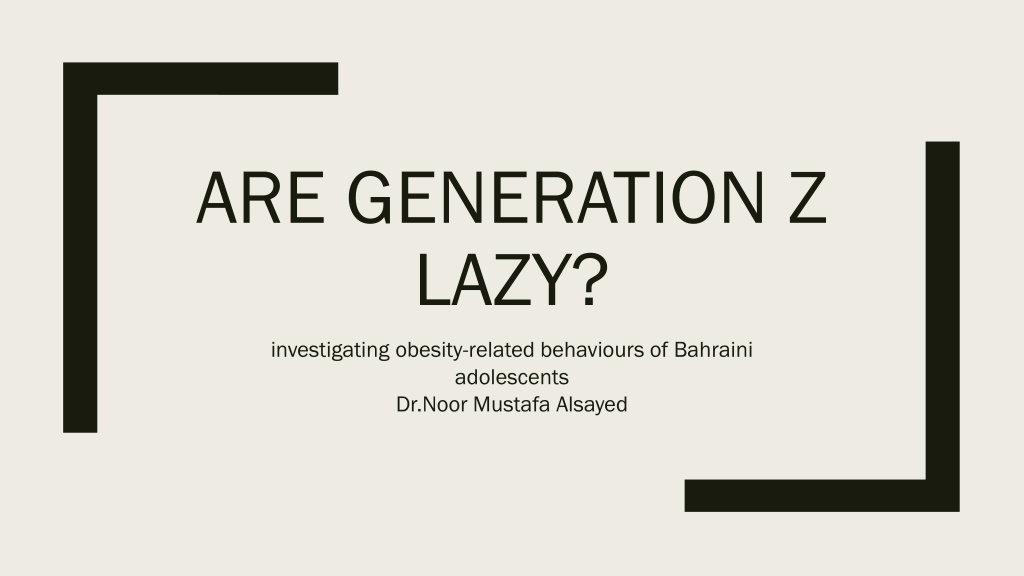Engaging Partners for Your Beverage Initiative
Setting the stage for engaging partners for your beverage initiative involves identifying potential champions, developing a strong case, and making connections. Learn how to navigate organizational culture, define objectives, and showcase ROI to leadership.
Download Presentation

Please find below an Image/Link to download the presentation.
The content on the website is provided AS IS for your information and personal use only. It may not be sold, licensed, or shared on other websites without obtaining consent from the author.If you encounter any issues during the download, it is possible that the publisher has removed the file from their server.
You are allowed to download the files provided on this website for personal or commercial use, subject to the condition that they are used lawfully. All files are the property of their respective owners.
The content on the website is provided AS IS for your information and personal use only. It may not be sold, licensed, or shared on other websites without obtaining consent from the author.
E N D
Presentation Transcript
ARE GENERATION Z LAZY? investigating obesity-related behaviours of Bahraini adolescents Dr.Noor Mustafa Alsayed
The rise in Obesity Obesity has reached epidemic proportions worldwide Adolescents risks of being obese increases due to High consumption of sugary and fatty foods Lack of physical activity High levels of screen time among adolescents increase their risk of being obese.
Obesity rates have rapidly increased among adolescents (Generation Z) Research Problem The problem is much worst in the GCC and Bahrain However, little research has examined the obesity-related behaviors of Bahraini adolescents (Generation Z)
The aim of this study is to investigate obesity- related behaviors among Bahraini Adolescents (Generation Z) Data was collected from 6 schools in the Kingdom of Bahrain Study aim and Sample Approximately 1,000 students participated in the study Their ages ranged between 10 and 18
Findings 1 in 3 participants are either overweight or obese The percentages of overweight or obesity among boys were almost twice as high compared to girls Weight Status Boys Girls Total Underweight 7% 7% 7% Normal 47% 74% 61% Overweight or obese 45% 19% 32% Obese 12% 6% 9%
Dietary Behaviors When it comes to dietary the participants: skip breakfast regularly (57.9%) eat fast food regularly (83.6%) consume insufficient amounts of fruits and vegetables i.e. less than 5 servings a day (84.4%) consume calorie dense snacks regularly (89.9%) dietary behaviors behaviors the majority of The percentages are far worst with the boys when compared with the girls especially with skipping breakfast (66.7% vs 48.8%),
Dietary Behaviors Findings are consistent with older studies on Arab adolescent s health which documented increasing consumption of fast foods and saturated fats and low consumption of fruits and vegetables in many parts of the region (Obermeyer, Bott and Sassine, 2015). High consumption of sugary and fatty foods and low consumption of dietary fibre by many children in the Kingdom of Bahrain is common and is likely to increase their risk of obesity in later life (Ghareeb and Rasheed, 2011).
Physical Activity hour per day engaging in moderate to vigorous physical activity (78.2%). The majority of the participants are classified insufficiently active i.e. spend less than an active boys (83.2% vs 72.9%) The percentage of insufficiently active girls is substantially higher than the insufficiently based Student Health) survey conducted in Bahrain. The percentage of adolescents (13 to 15 years) who were physically active at least 60 minutes per day on all 7 days during the 7 days was as low as 20.7% and the percentage of the same adolescents who spent three or more hours per day sedentary was as high as 58.8% (WHO, 2016). The unhealthy dietary habits, low physical activity levels and high sedentary behaviour among adolescents is not just a regional problem but a global problem. One study in the UK investigating adolescents dietary behaviours, physical activity and sedentary behaviour found that the vast majority of adolescents were not consuming the recommended amounts of fruits and vegetables( 5 servings/day), were not meeting physical activity guidelines (60 minutes of MVPA/ day) and were spending long hours sedentary (Basterfield et al., 2013). In a similar study conducted in Australia, a significant proportion of adolescents fell short of national dietary and physical activity recommendations (Scully et al., 2007). In another study investigating physical activity and sedentary behaviour in the US, the majority of adolescents were participating in minimal MVPA and spending a large portion of their day sitting (Carson, Staiano and Katzmarzyk, 2015). Findings are also consistent with the latest statistics from the GSHS (Global School-
Screen Time high sedentary (78.3%) with the average number of hours spent sedentary being 4.3 hours a day which is more than twice the international recommended guidelines (which is 2 hours or less per day). The majority of the participants are classified substantially higher than the high sedentary boys (85.4% vs 71.6% vs). The percentage of high sedentary girls is
Sleep A high percentage of the participants are also sleep deprived i.e. get less than eight hours of sleep per day (44.4%). The percentage of sleep deprived boys is substantially higher than the sleep deprived girls (48.1% vs 40.2%).
Unhealthy diet, low physical activity levels and high sedentary behaviour among adolescents is not just limited to this sample, but seems like a global problem which needs to be taken seriously in policy making. There was no substantial difference between the percentage of boys and girls consuming fast food, insufficient amounts of fruit and vegetable, and calorie-dense snacks regularly in the sample as was shown in Table 5.4 in Chapter Five. However, a substantially higher percentage of boys seem to engage in skipping breakfast regularly (66.7% vs 48.8%) and sleep deprivation (48.1% vs 40.2%) when compared to the girls as was shown in Table 5.4 in Chapter Five. Additionally, a substantially higher percentage of girls seem to be insufficiently active (83.2% vs 72.9%) and high sedentary (85.4% vs 71.6%) when compared to the boys as was shown in Table 5.4 in Chapter Five. The difference in boys and girls behaviours are not uncommon in other similar regional and international studies especially with physical activity and sedentary behaviour. In a study investigating obesity risk factors among Bahraini adolescents, the lifestyle risk factors of obesity differed among males and females (Musaiger, Al-Roomi and Bader, 2014). Girls were less prone to practice sports and exercises when compared to boys mainly because they are facing more socio-cultural barriers to practice physical activity and because boys in general, have more freedom and places to practice exercise and other recreational activities when compared to girls (Musaiger, Al-Roomi and Bader, 2014). In one study investigating dietary behaviours, physical activity and sedentary behaviour among adolescents in the UK, boys were found to be significantly more active than girls, and girls spent more time being sedentary (Basterfield et al., 2013). In another study investigating physical activity and sedentary behaviour among adolescents in the US, girls were less engaged in MVPA compared boys and spent more time sitting (Carson, Staiano and Katzmarzyk, 2015). Unhealthy diet, low physical activity levels and high sedentary behaviour among adolescents is not just limited to this sample, but seems like a global problem which needs to be taken seriously in policy making.
In the Arab gulf region, very few studies offered recommendations that translate research findings into practice (Mabry et al., 2016). Additionally, there are no comprehensive programmes directed towards combating obesity, only some activities related to the prevention and control of obesity carried out by the Ministry of Health that focus on mass media and producing booklets (Musaiger, 2011). There is an urgent need for policy makers to address risks factors for non- communicable diseases including obesity and to encourage young people to adopt healthier behaviour with regard to diet and physical activity (Obermeyer, Bott and Sassine, 2015). This is especially true because of the obesogenic environment in school children and adolescents in the kingdom of Bahrain which creates the need for establishing an early intervention programme to control obesity (Musaiger, Al-Mannai and Al-Marzog, 2014). Testing international examples in the local context would be helpful to inform policy makers to make more effective interventions (Mabry et al., 2016).
Findings from this study are useful for policy makers to design more effective network-based health interventions which were successful when implemented abroad Findings are also gender specific, which has implications for gender-tailored interventions Conclusion In the Arab gulf region, very few studies offered recommendations that translate research findings into practice In Bahrain, there are no comprehensive programmes directed towards combating obesity including adolescent obesity























